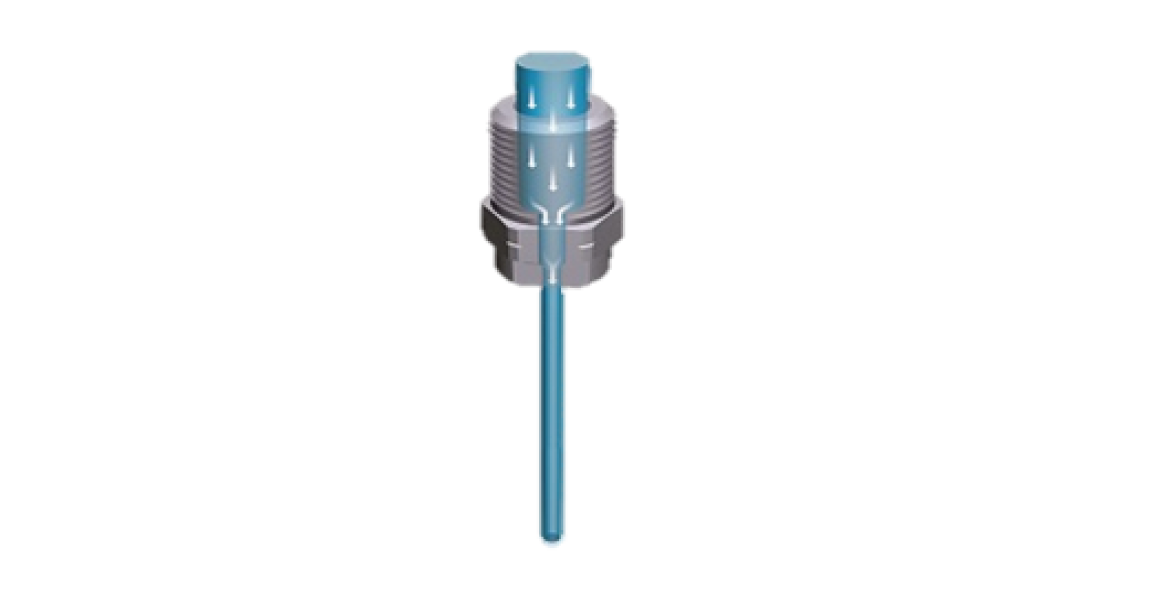Nozzle Spray Patterns and Classifications

Spray Nozzles come in various spray nozzle designs and can be classified by their spray patterns.
Spray patterns are influenced by the following factors:
- Geometric design of the nozzle outlet
- Internal geometry design of the nozzle (swirl part, swirl chamber)
- Transfer of the liquid (axial or tangential)
- Liquid properties (specific gravity, viscosity)
Types of Spray Nozzles

Hollow Cone Nozzles
Hollow cones produce the smallest droplet size of any purely hydraulic nozzle. The spiral grooves in the swirl inserts ensure an efficient rotation of the liquid, which creates uniform droplets in a ring pattern.
In the axial flow design, the rotary motion of the liquid is generated by the swirl insert or vane. The axial design produces the finest droplets even when compared to tangential. The tangential design contains no inserts and the liquid flows at a right angle, which creates a spiraling rotation inside the nozzle chamber. These nozzles are less prone to clogging.

Full Cone Nozzles
Full cone nozzles spray completely within the interior of a circular area and provide full coverage.
Axial full cone nozzles achieve a uniform distribution of liquid over a circular area. The high precision of distribution is achieved by orienting the liquid inlet to the center of the swirl chamber of the nozzle.
Tangential full cone nozzles have no internal vanes so they are less prone to clogging. The atomizing fluid is tangentially supplied to a swirl chamber, where it is put into rotation.

Flat Fan Nozzles
Flat fan nozzles provide uniform coverage in a narrow line of spray. Typically, the spray is concentrated in the center and tapered at the ends. This axial design is the first choice when a sharply defined spray is needed for concentrated impact and cleaning power.
The flat fan deflector tongue-type nozzle is a unique design. The flat fan pattern is generated by a solid stream, where the liquid exits the orifice upon an external deflector plate (“the tongue”). The deflector design produces the highest impact force even at lower pressures in comparison to the axial design. Tongue-type nozzles are clog resistant and produce a sharply delimited flat fan pattern.

Solid Stream Nozzles
Solid stream spray nozzles provides the highest level of impact due to the solid jet concentrating its total flow in a smaller surface area.

Tank Cleaning Nozzles
Tank cleaning nozzles are either rotating or static sprays. Rotational sprays are either free-spinning or gear driven and can produce flat fan or solid stream spray patterns. When free-spinning nozzles are used at the optimal pressure, they provide good spray impact for cleaning but in some cases, higher pressures can cause atomization of the spray. The gear driven or controlled rotation gives more impact at higher pressures.
Static sprays produce a concentrated solid stream spray, which is typically used for rinsing applications.

Pneumatic Atomization Nozzles
Pneumatic atomization uses the twin fluid principle, which combines both air (gas) and liquid inside a mixing chamber. The air (gas) is used to break the liquid into finer droplets, which creates the atomization. Pneumatic atomizing nozzles come in two variations: internal and external. The external design is typically used for viscous liquids.
Pneumatic atomizing nozzles can produce two types of sprays. Pneumatic flat fan atomizing nozzles produce a flat spray pattern with extremely fine droplets and spray angles up to 80°. Pneumatic full cone atomizing nozzles are preferably used for applications demanding uniform circular impact patterns or larger spray distances.

Compressed Air Nozzles
Air does not have the same spray characteristics as liquids and these nozzles are used for dispersing air or steam in a concentrated area. Generally, air nozzles have a flat fan or solid stream spray pattern. Lechler’s multi-channel air nozzle is designed to blow air through multiple channels, which provides a targeted and powerful airflow.

